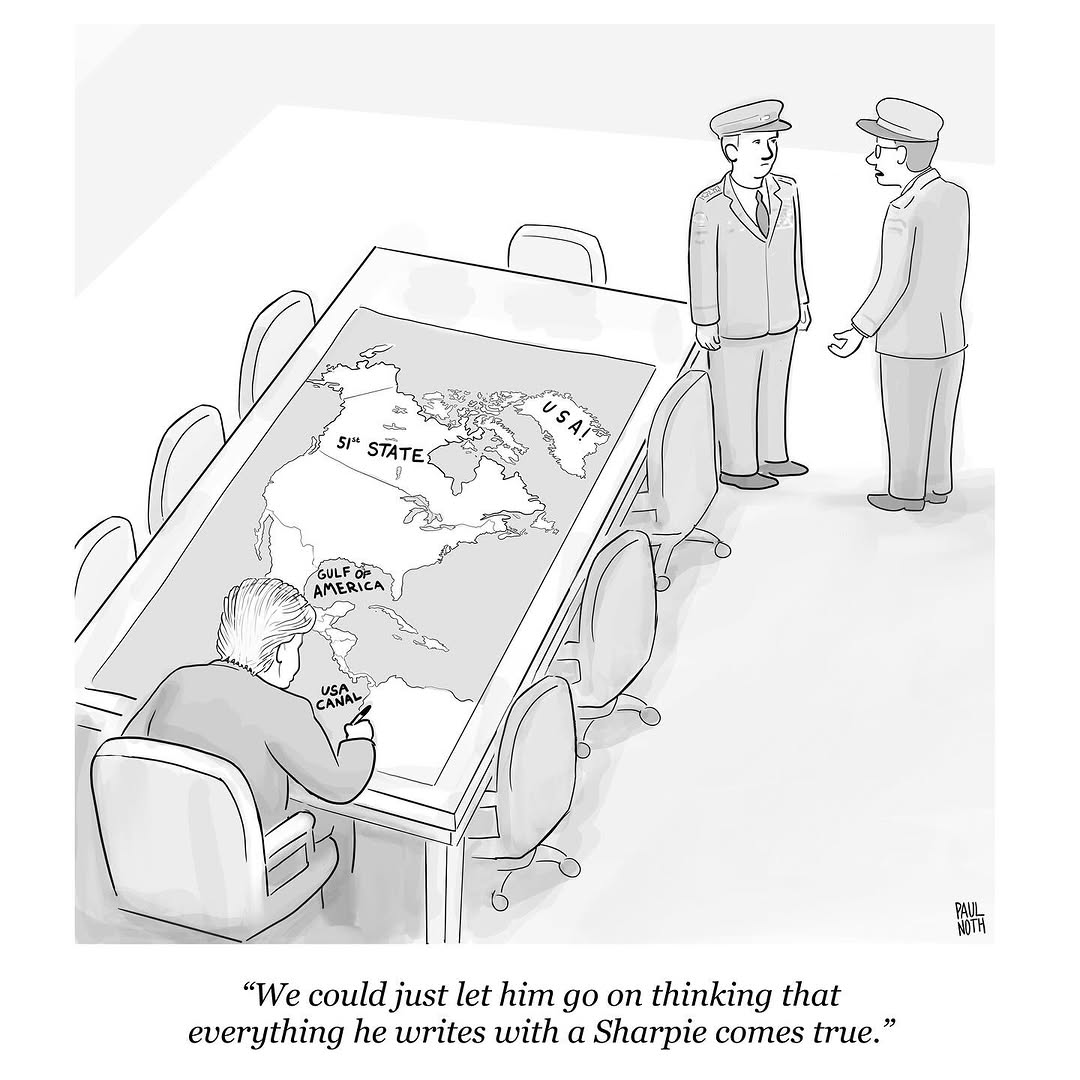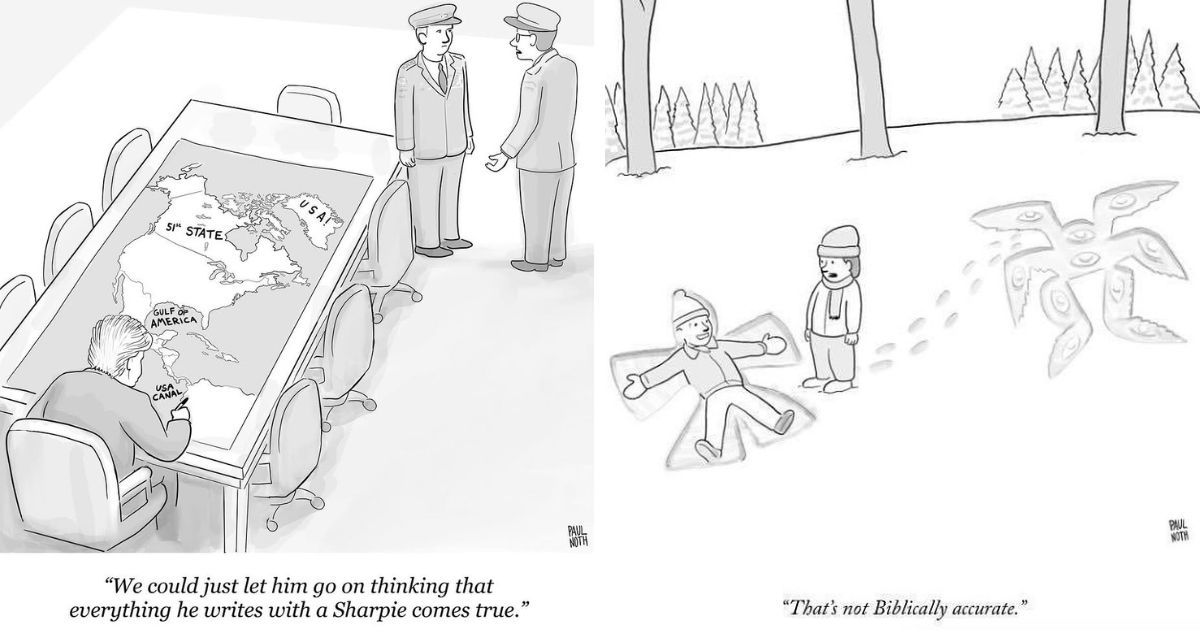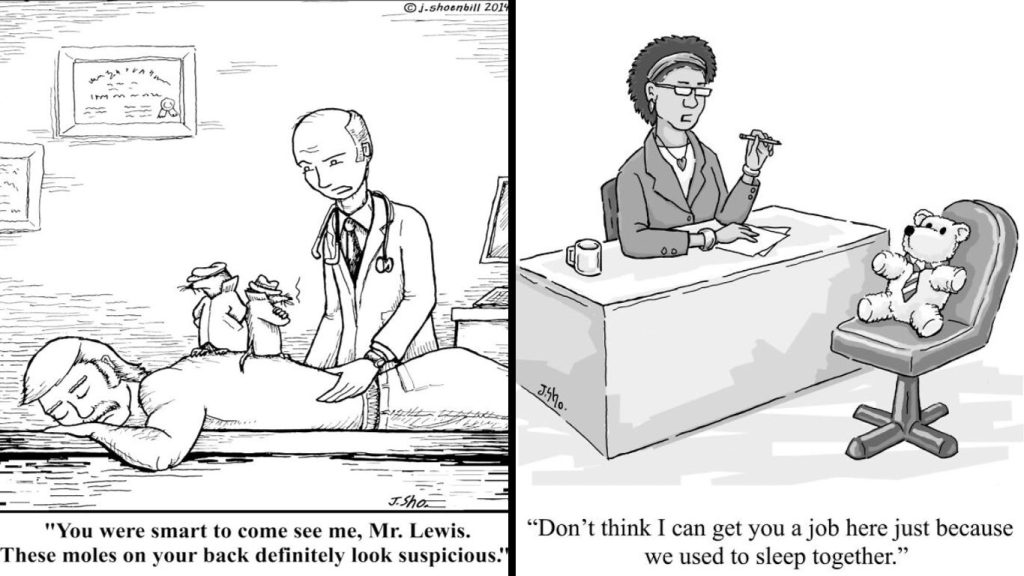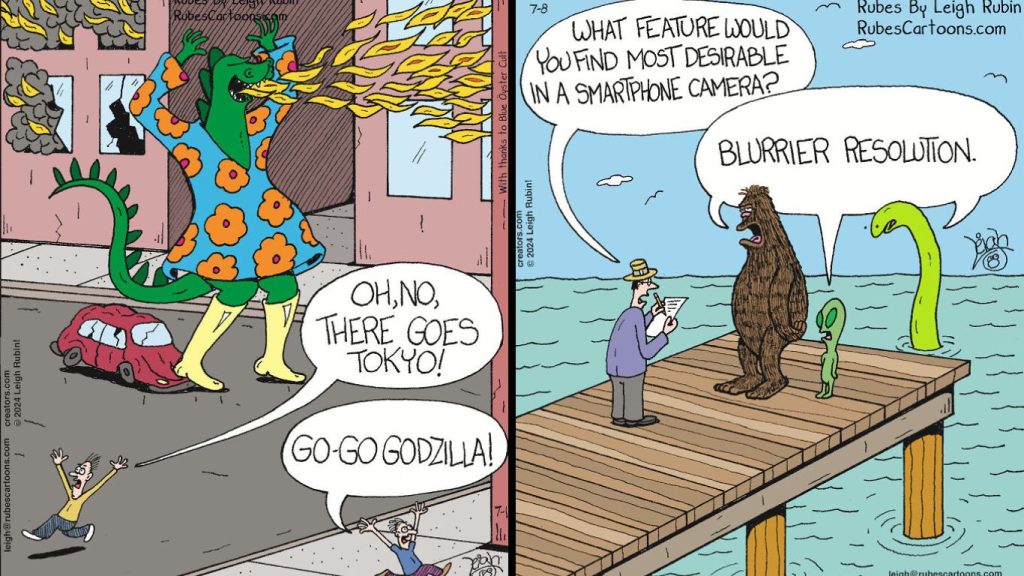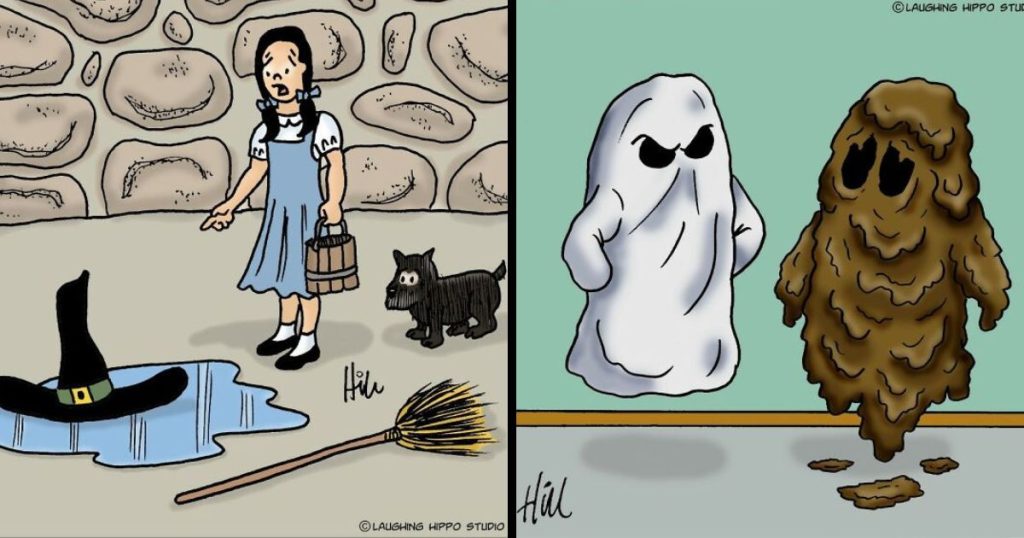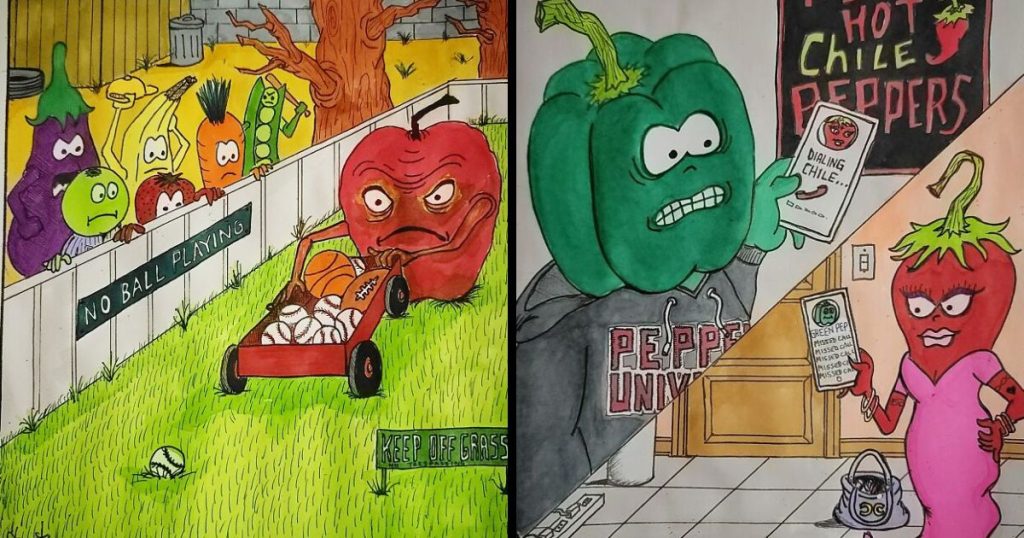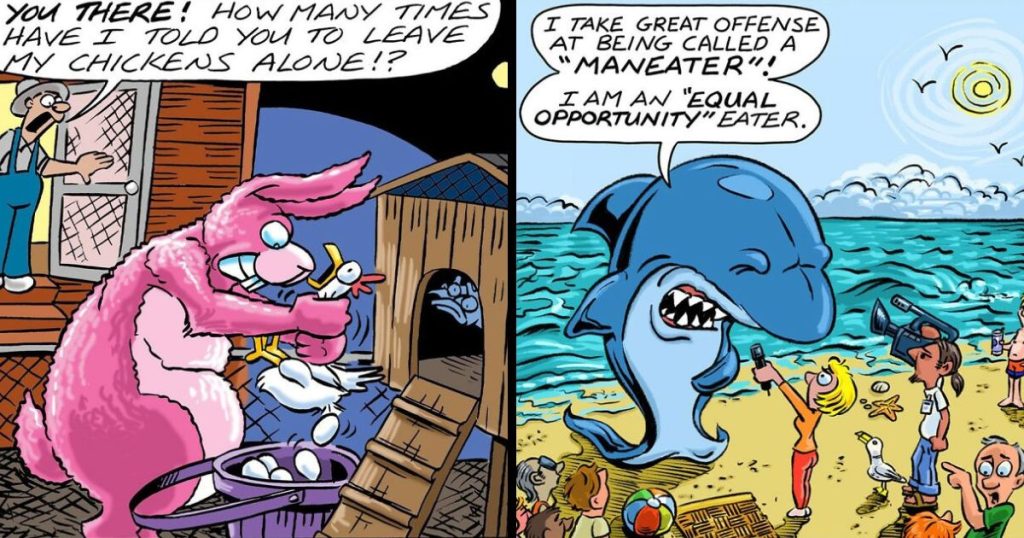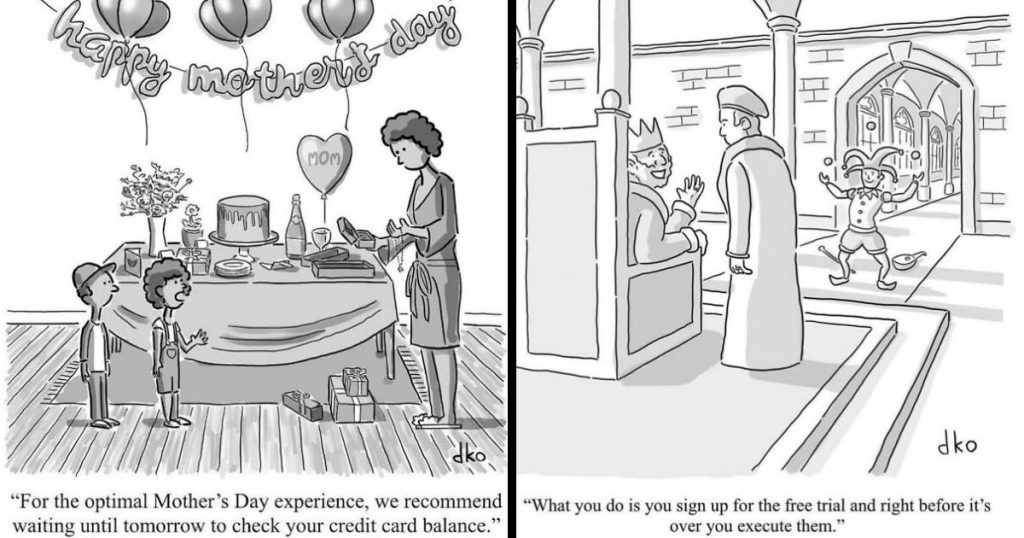Paul Noth, the mind behind some of The New Yorker’s most memorable cartoons, has a unique knack for distilling humor into its simplest most absurd form. In his one-panel comics, Paul delivers punchlines that range from surreal to sharply witty, often highlighting the bizarre elements of everyday life. These cartoons have become a signature of his style unexpected clever and always thought-provoking. Beyond his well-known New Yorker work, Paul’s creative talents extend far and wide. He’s been involved in producing short animated films for major shows like Late Night with Conan O’Brien, Saturday Night Live Adult Swim, and Nickelodeon. His versatility doesn’t stop there; he also wrote and illustrated the middle-grade book series How to Sell Your Family to the Aliens and co-created educational comics used in classrooms worldwide. Despite his success across different mediums, Paul credits his cartoons for keeping him grounded in his creativity. As he puts it, “The only consistent work for the past twenty years has been my New Yorker cartoons. For me, regular cartooning is like the pilot light that starts all the other creative projects. His one-panel cartoons serve as a launchpad for his broader creative endeavors, a place where his humor first takes shape before spilling into other artistic realms. Paul’s work continues to resonate with audiences thanks to his distinct voice and his ability to make the ordinary seem hilariously extraordinary.
More info: Instagram | condenaststore.com | paulnoth.com | x.com
1.

2.

3.

4.
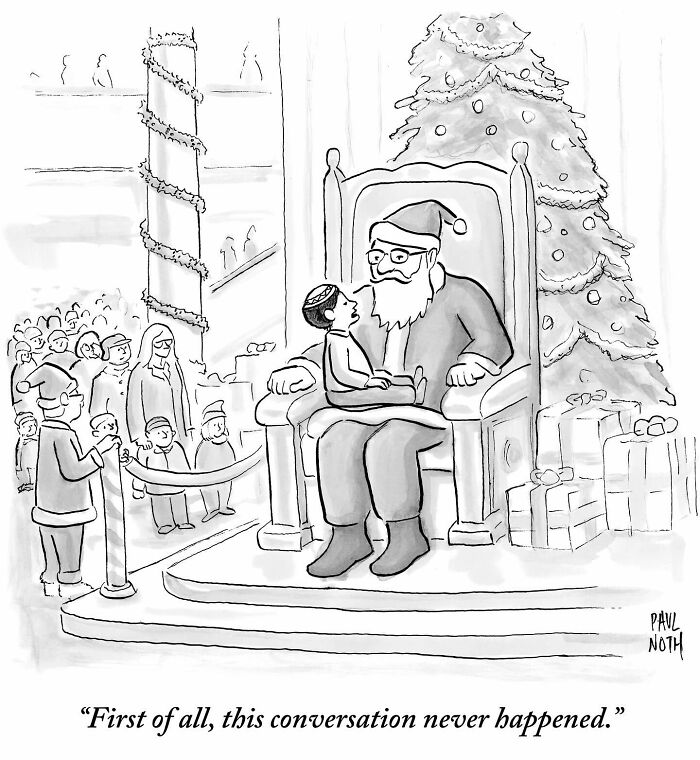
5.
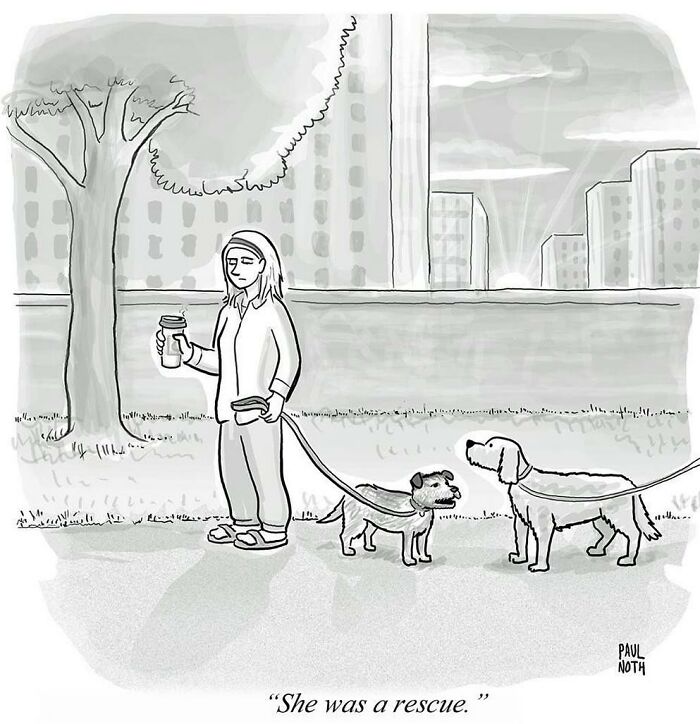
Paul Noth, a cartoonist with a distinctive offbeat sense of humor hails from Milwaukee Wisconsin where he still resides today. Interestingly Paul’s path to becoming a well-known illustrator wasn’t a direct one his academic background is rooted in writing and literature, not art. He never formally studied cartooning or attended an art school but his love for drawing has been a constant part of his life pursued more out of personal enjoyment than ambition.
It was this passion, combined with a bit of serendipity, that ultimately led Paul to become a professional cartoonist, even though he never set out to make it his career. As he explains, despite his initial resistance his hobby slowly evolved into a job. Like many freelancers, Paul wears many hats while his cartoons may be what he’s best known for he also works on a variety of other creative projects. Paul’s journey is a reminder that sometimes the best career paths are the ones you don’t plan for and that passion, even when it starts as a side interest can lead to unexpected and exciting opportunities.
6.
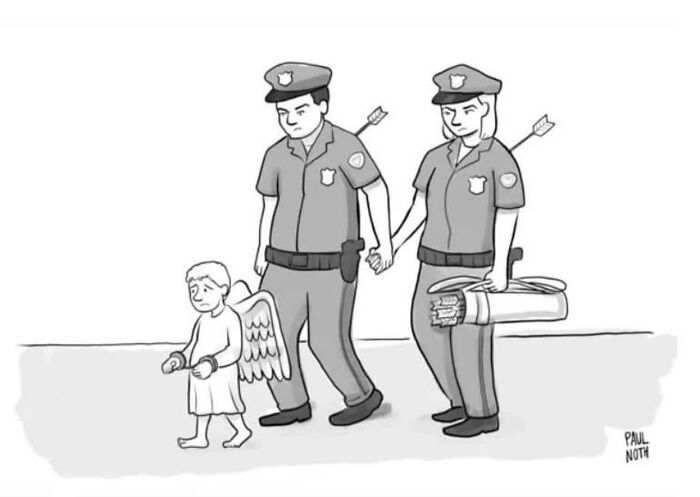
Also Read:
- 10 New Witty Argyle Sweater Comics by Scott Hilburn
- 10 New Adam Sacks Cartoons That Redefine Modern Humor
- 10 Hilarious Free Range Comics That’ll Crack You Up
7.
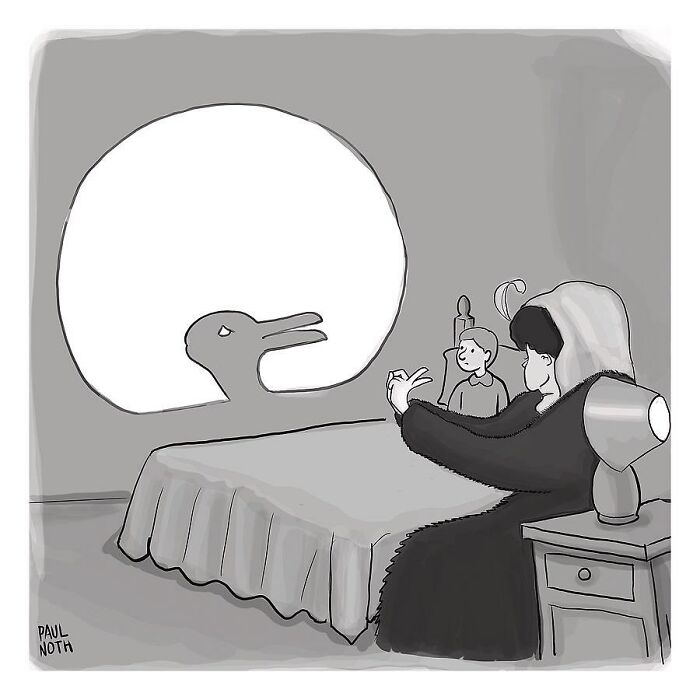
8.
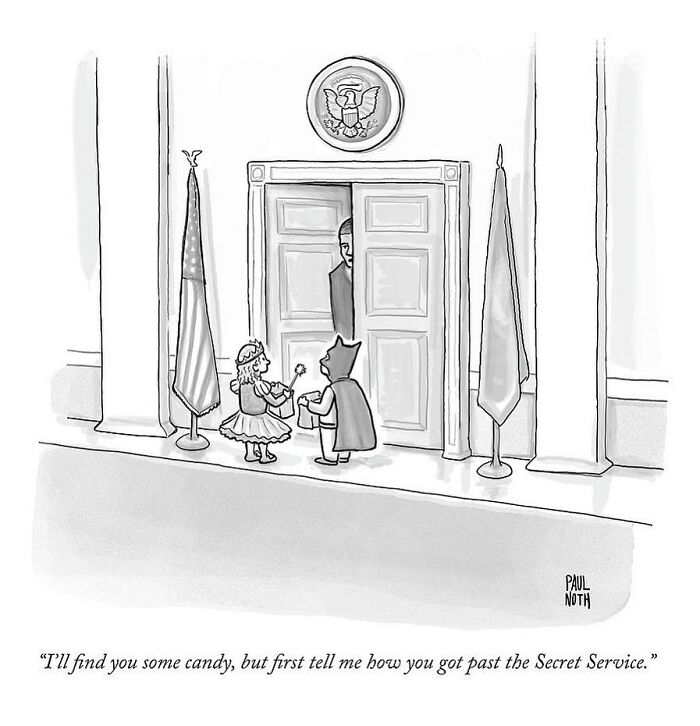
9.

10.
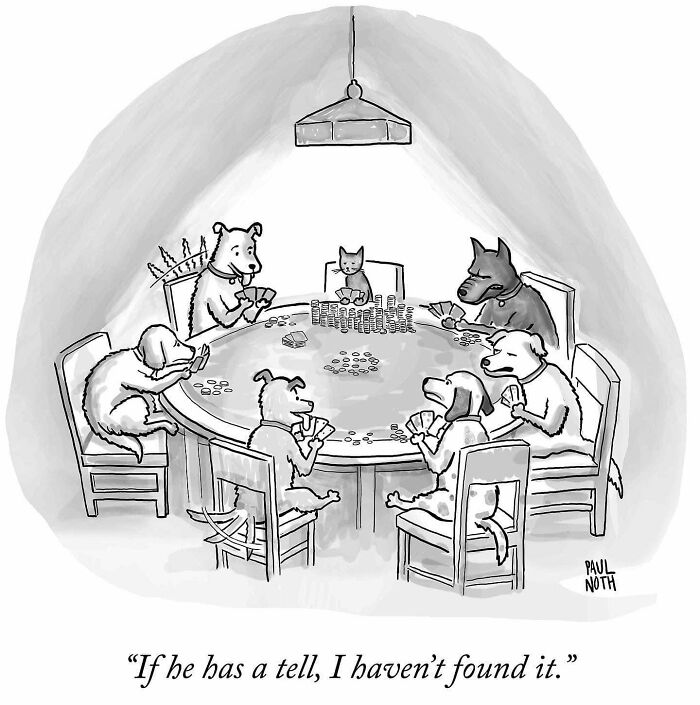
11.
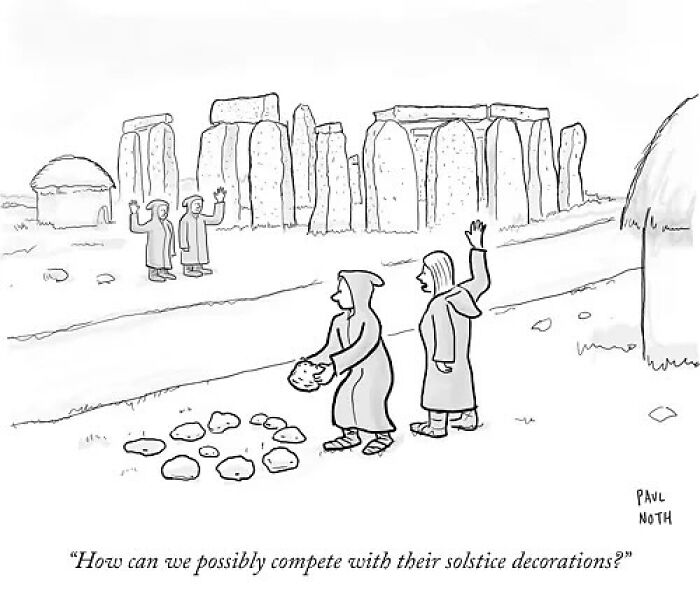
12.
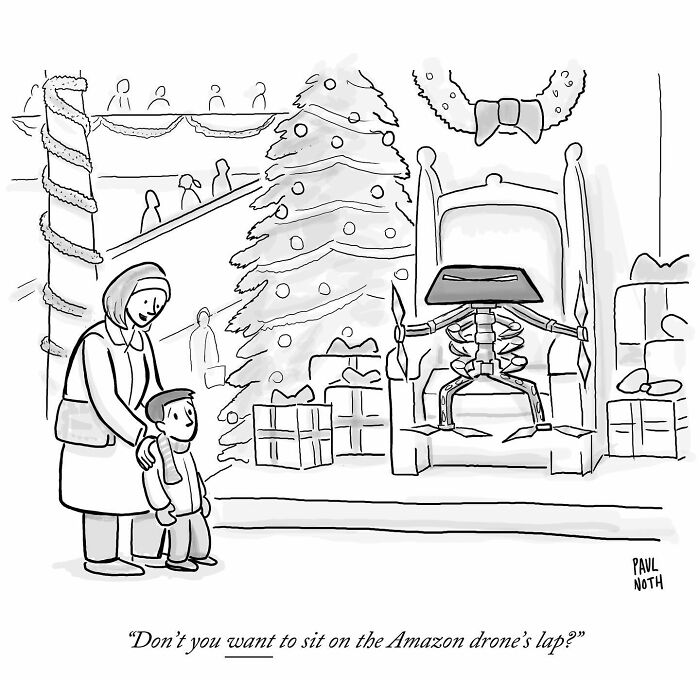
When it comes to the core of his cartoons Paul Noth’s approach is refreshingly straightforward. For him, the ultimate goal is simple: he wants to make people laugh. He aims to craft jokes that stand the test of time and remain funny long after the initial punchline lands. While there may be recurring elements or subtler patterns across his work Paul insists that these are less about intentional themes and more a reflection of his quirks and observations.
If you were to ask Paul about his work, he’d likely let the cartoons speak for themselves. Rather than overanalyzing or over-explaining he’d probably just share a few examples and leave it at that trusting the humor to connect with the audience on its terms. In that way, his cartoons are as much an exploration of his sensibilities as they are an invitation for others to find humor in life’s absurdities. It’s this balance of authenticity and simplicity that makes Paul’s work so relatable and enduring.
13.
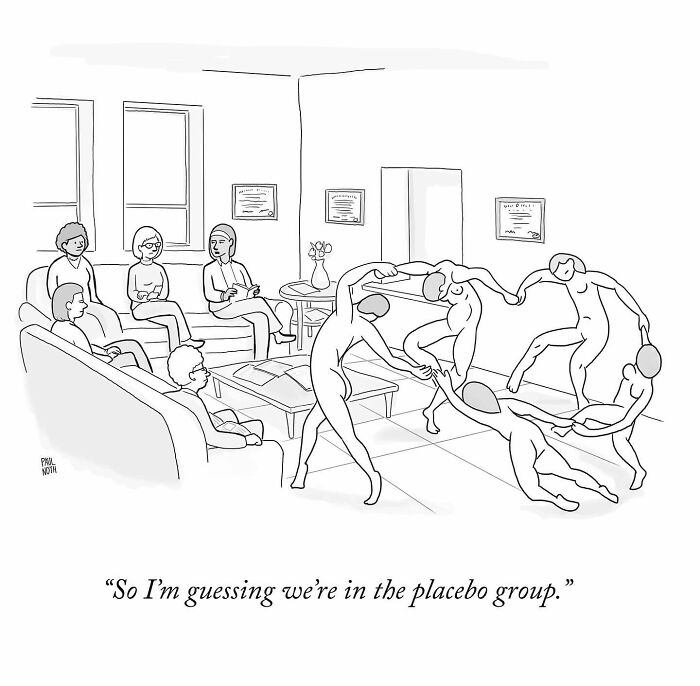
14.
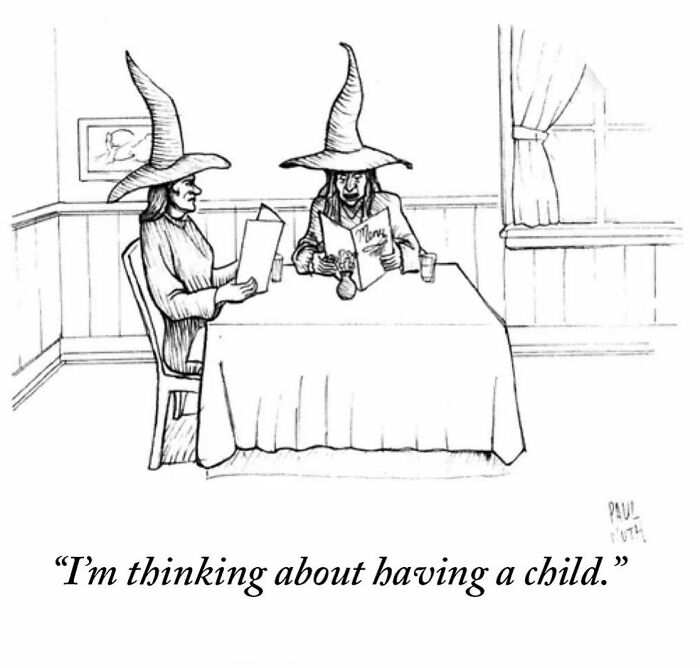
15.
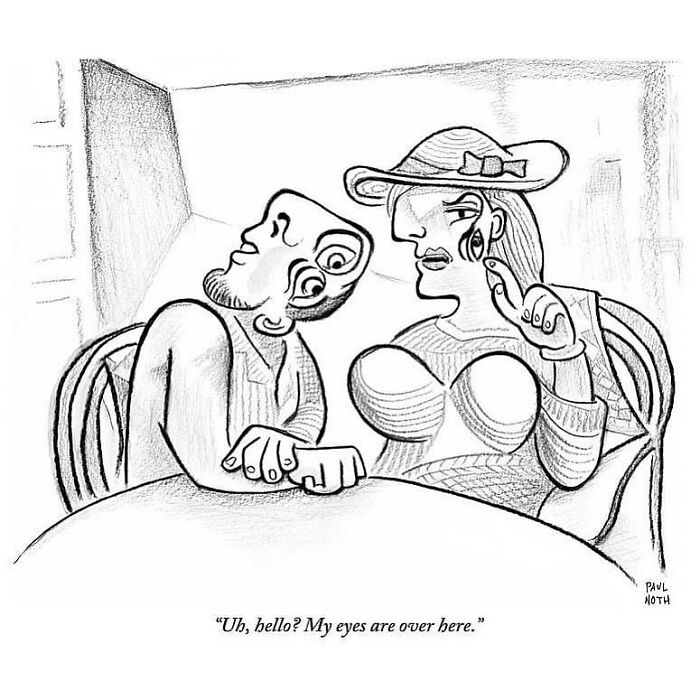
16.
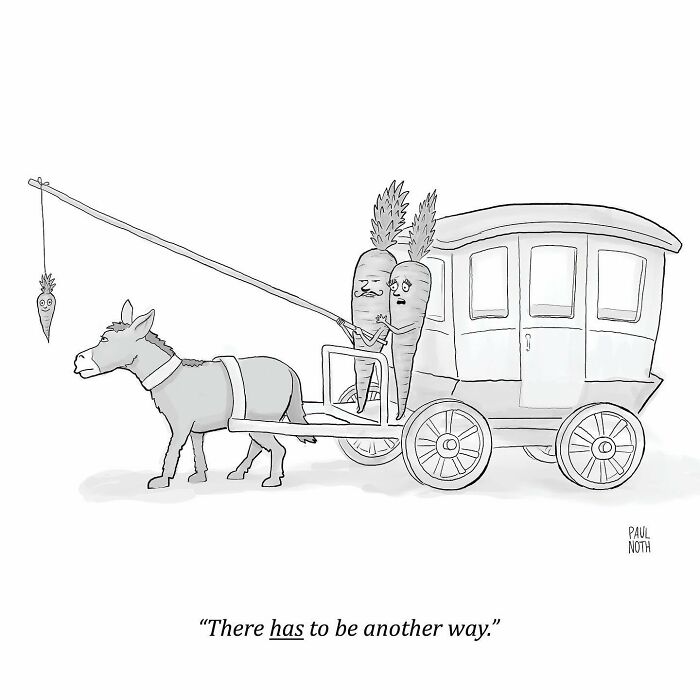
17.
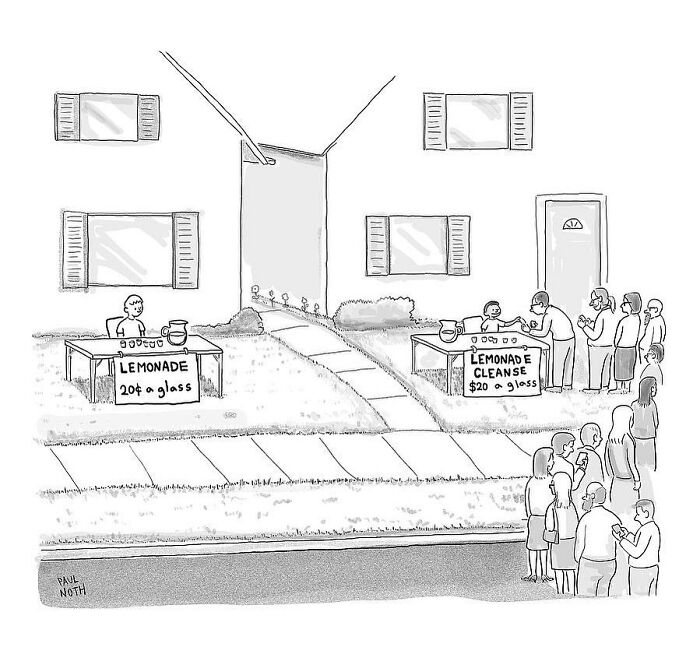
18.
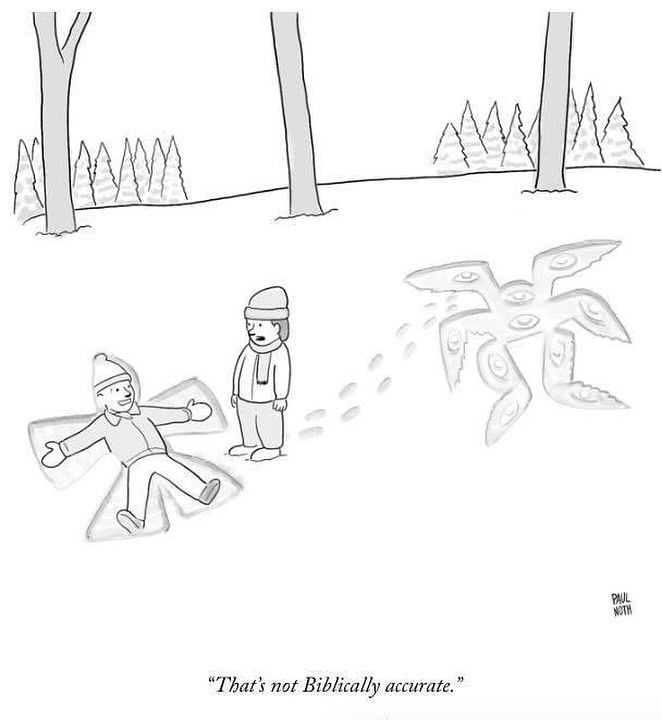
Paul Noth has a special appreciation for the lasting impact his cartoons can have on people’s daily lives. He finds genuine joy when he sees one of his pieces displayed on a refrigerator or in an office cubicle, knowing that his work has found a place in someone’s personal space. However, this small act of appreciation also brings a bit of artistic pressure. For Paul, it’s a reminder that while humor is the core of his work the visual aspect also needs to hold its own. The cartoon has to be more than just funny it should be aesthetically pleasing enough to become part of someone’s environment. Of course, he admits a great joke can often outweigh a less-than-perfect drawing, but it’s always a balancing act.
19.
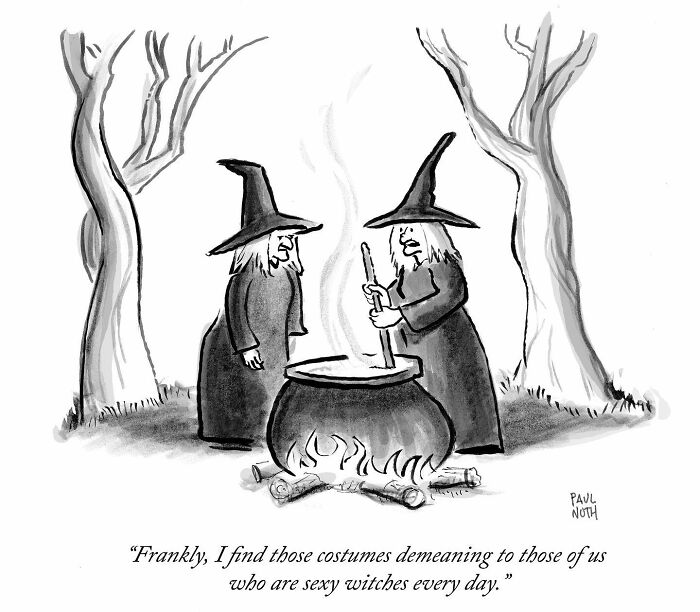
20.
